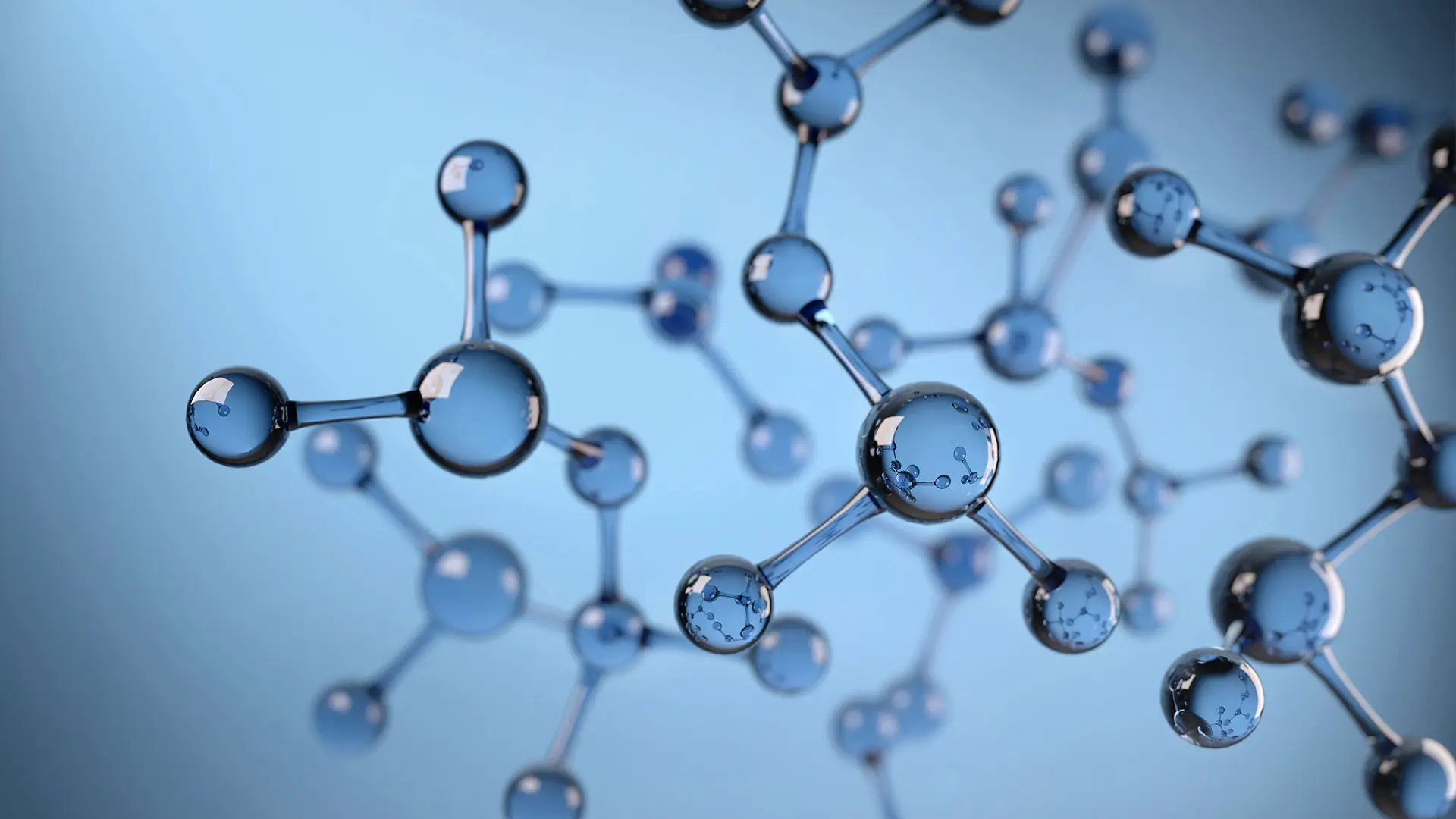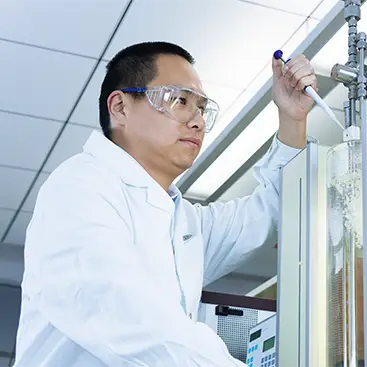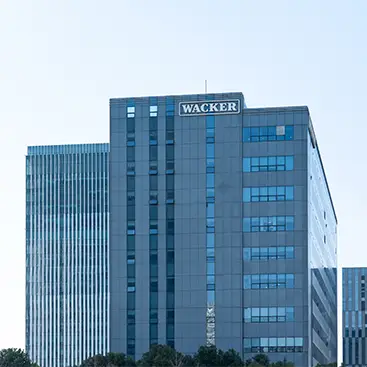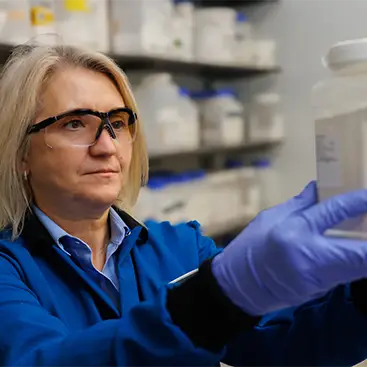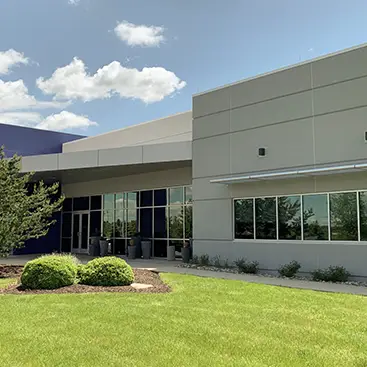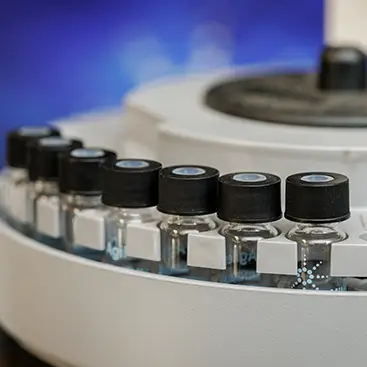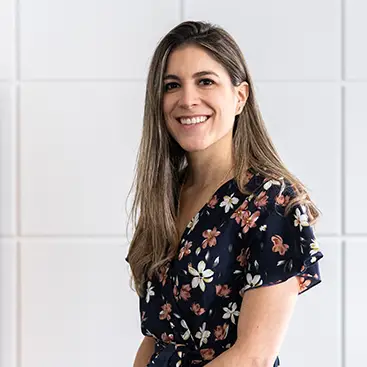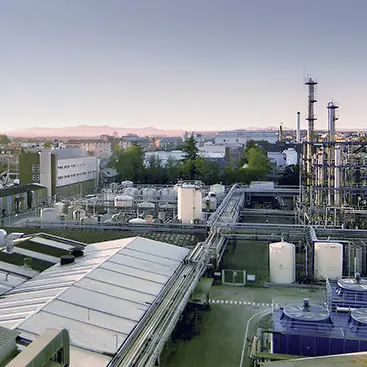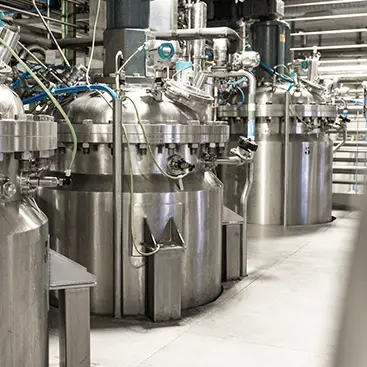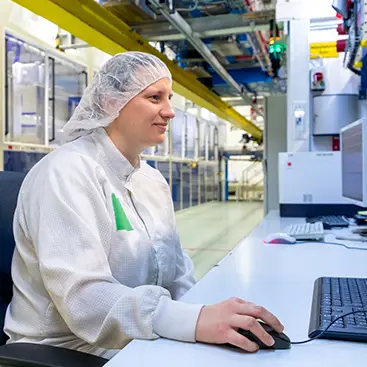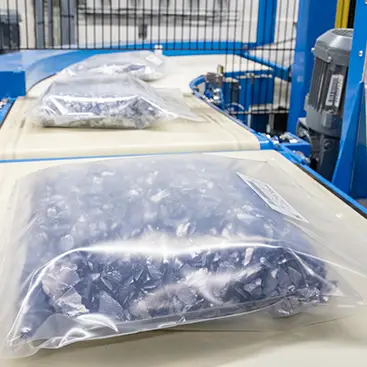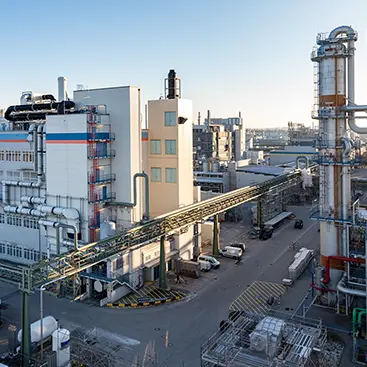WACKER is among the most research-intensive chemical companies in the world. The focus is always on customers. Thanks to innovative solutions and constant enhancements, we aim to serve customer needs as effectively as possible.
Case Study | China
SILICONES Innovation Reloaded
Henry Fan stands in front of an extractor hood in his white lab coat and looks out over the lab benches in the Shanghai Technical Center. Measuring cylinders, mixers and various pieces of test equipment are neatly lined up in long rows. The hum of an extractor fan can be heard in the background. The 45-year-old chemical engineer who joined WACKER in 2006, has headed China’s silicone resins research team since 2022. “I love doing research and discovering new areas of application”, he says. “But you also have to keep an eye on topics that may have fallen into oblivion.”
His current project is a good example of this. A year ago, the researcher came across a 20-year-old internal study written by silicone chemists at WACKER’s Burghausen site in Germany. It dealt with the question whether silicone resins were suitable as flame retardants for plastics such as polycarbonate and polyamide. Back then, the project was shelved.
Henry Fan immediately recognized the topic’s potential and put the project back on track, taking into account that global demand for flame retardants is quite significant nowadays. Market experts estimate that over two million metric tons are used every year, and this is trending upwards. The main customers come from the construction, electrical engineering and electronics industries, where the use of plastics containing flame-retardant additives has long been an essential requirement. Other sectors are catching up: the transportation industry, for example, or car makers, particularly those turning to e-mobility.
However, in the European Union and the USA, certain kinds of flame-retardant additives may soon be banned for environmental and toxicological reasons. “Plastics processors will therefore be forced to switch to halogen-free additives in the long term if they want to sell their products in these regions,” says Fan. “This opens up completely new markets for silicone resins and silanes.”
Silicones are suitable as flame retardants for several reasons. For example, they ceramify on combustion. The resulting ash forms a solid layer over the source of the fire and smothers it. Silicones also form pyrolysis gases during combustion. This flow of gas displaces the oxygen and acts as a draft that blows out the flames.
In his studies, Henry Fan has discovered yet another useful property. In combination with certain silanes, silicone resins can prevent the formation of droplets whenever plastics melt in response to heat. This in turn reduces the risk of burning droplets starting further fires. “Combining the good flame-retardant properties of our silicones with a powerful anti-dripping effect is our goal. Such a product would be a truly trailblazing innovation for our customers.”
2
million metric tons
of flame-retardant material are in use around the world – and their use is trending upwards
Case Study | USA
POLYMERS Weathering the Storm
The desire to explore new things has led Zarka Zarkov from her native Smederevo in Serbia via Belgrade to Allentown, Pennsylvania in the US. Equipped with a background in chemical engineering, polymer science and engineering, she was the perfect fit for WACKER. Today, after more than 15 years at the company, she heads the POLYMERS Research & Development and Innovation team in the North and Central America region. Working with customers and colleagues around the world, she helps to find solutions to practical challenges, mostly for the construction industry, always with a view to sustainability.
Innovation in construction is the key to slashing CO2 emissions and cutting heating costs: Worldwide, the operation of buildings consume 30 percent of the final energy consumption and generate 26 percent of the global energy-related CO2 emissions. In an average American home, heating and cooling account for 50 to 70 percent of the used energy. Exterior insulation and finish systems (EIFS) are among the most efficient and successful methods of insulating walls from the outside, to reduce thermal losses.
Before the insulation board can be applied, the sheathing of the building envelope is equipped with a weather-resistive barrier (WRB). The barrier is essential for the preservation of an airtight building envelope, which is key to ensuring energy efficiency. Even in a tightly sealed building, water vapor must be able to escape, preventing the negative effects of moisture trapped in sheathing. As the use of wood and gypsum materials for construction is very common in the US, a reliable protective barrier that helps prevent water absorption is essential. “Traditionally, the construction industry has used styrene butadiene latex (SBL) as their binder of choice for water-resistive barriers in EIFS. While SBL has the advantage of water resistance, it undergoes severe degradation when exposed to UV light, wind or rain. This becomes a problem during construction when WRBs are exposed to the elements for an extended period prior to the installation of insulation and cladding, as they decline in quality,” Zarka explains.
WACKER developed a new formula based on vinyl acetate ethylene (VAE) dispersion, which is tailored to the needs of the US market. “The new products based on VAEs can be exposed to UV light, wind or rain for up to a year without losing their bond with cementitious channel adhesive, which are used to adhere the insulation boards to the wall. At the same time, we did not sacrifice any other performance attributes to attain this improvement in adhesion,” Zarka points out. “This example shows once again how important it is to be close to customers and their needs when developing innovative solutions.”
26
percent
of global energy-related CO2 emissions are caused by the operation of buildings
Case Study | Spain
BIOSOLUTIONS Somos Uno
Stainless steel vats several meters high are lined up in the production halls. Employees in protective clothing are operating the equipment. The smell of fermentation is in the air. “This is going to be something big,” says Laura Lopez Pineda with conviction. “We have highly qualified and motivated staff, good production capacities and room for further growth.” ADL BioPharma in León became part of WACKER in May 2023. Soon afterward, Lopez came to the long-standing biotech site in the north of Spain. Her task as integration manager is to contribute to the site’s successful incorporation into the Group.
With the acquisition of ADL – an investment of over 100 million euros that she helped prepare –, WACKER aims to position itself even more strongly in the growth market for sustainably produced dietary ingredients. One billion euros in sales by 2030 is the ambitious goal for WACKER BIOSOLUTIONS, and the León site is set to make a major contribution.
The biotech arm is still the smallest division in the Group, but it is growing bit by bit.
In 2016, WACKER had already acquired a plant for the fermentation-based production of cystine on the ADL site in León. Now the entire site belongs to WACKER. Cystine and the amino acid cysteine produced from it are in demand in the food, pharmaceutical and cosmetics industries. These are used to create flavors and improve the processing of bakery doughs, serve as antioxidants in cosmetic products or as expectorants in cough medicines. WACKER was the first company in the world to produce cystine in a patented biotech process.
Lopez, a native Colombian, describes her work as follows: “I am an interface, problem solver and mediator between departments and cultures. Under the motto ‘Somos uno – We are one,’ we are forming a unit from the former Wacker Biosolutions León with its 80 employees and the 300 or so from ADL and integrating them into the Group.”
The combination of the Spaniards’ large-scale technical potential and WACKER’s extensive experience in biotechnology opens up great growth potential – both as a contract manufacturer (CMO) and for upscaling its own innovations. Lopez will remain in León with her young family and continue to help shape the development of the WACKER site. “I strongly believe in the future we are building here.”
1
billion euros
in sales in 2030: BIOSOLUTIONS’ growth target
Case Study | Germany
POLYSILICON 99.9999999999 Percent Purity
Silvery, shiny silicon lies in the small white plastic baskets, waiting to be dipped into the acid basin. This polycrystalline silicon from WACKER is the purest material produced by human hands in an industrial process. Impurities in the material are measured in parts per trillion (ppt = one foreign atom per trillion silicon atoms); WACKER silicon corresponds to a purity of 99.9999999999 percent.
Ultrapure silicon forms the basis for high-performance logic and memory chips, such as those used in the latest smartphones. Only a few manufacturers in the world are capable of mastering their processes to produce semiconductor-grade polysilicon at this extremely high level. Nearly 50 percent of the material that is processed into chips worldwide comes from WACKER; to meet the highest quality requirements in the semiconductor industry, it first passes through an acid basin before being shipped to customers.
Employees in the polysilicon-cleaning plant operate several production lines continuously around the clock: having first been deposited and crushed to a high degree of purity, the polysilicon is carefully checked to ensure utmost quality, then cleaned using the etching process and packaged in a cleanroom in an ultrapure plastic film ready for shipment.
“This etching is a crucial quality assurance step to ensure the purity of the silicon required by our customers,” emphasizes Michaela Waldhör, shift supervisor in the polysilicon-cleaning plant.
The reason is that when the previously deposited silicon rods are crushed, a small degree of contamination caused by foreign atoms is unavoidable. “So the surface of semiconductor-grade polysilicon has to be cleaned in a final step. We do this by etching the material with highly concentrated acids,” she explains.
Semiconductor-grade polysilicon is in high demand for new applications in artificial intelligence, electromobility and autonomous driving. To meet growing demand, WACKER is building a new cleaning line in Burghausen at a cost of over €300 million. Together with Michaela Waldhör, 100 new colleagues will ensure that the white plastic baskets are dipped into the acid basin – and that customers receive the outstanding quality they are used to.
300
million euros
are being invested by WACKER in a new cleaning line for semiconductor-grade polysilicon in Burghausen

